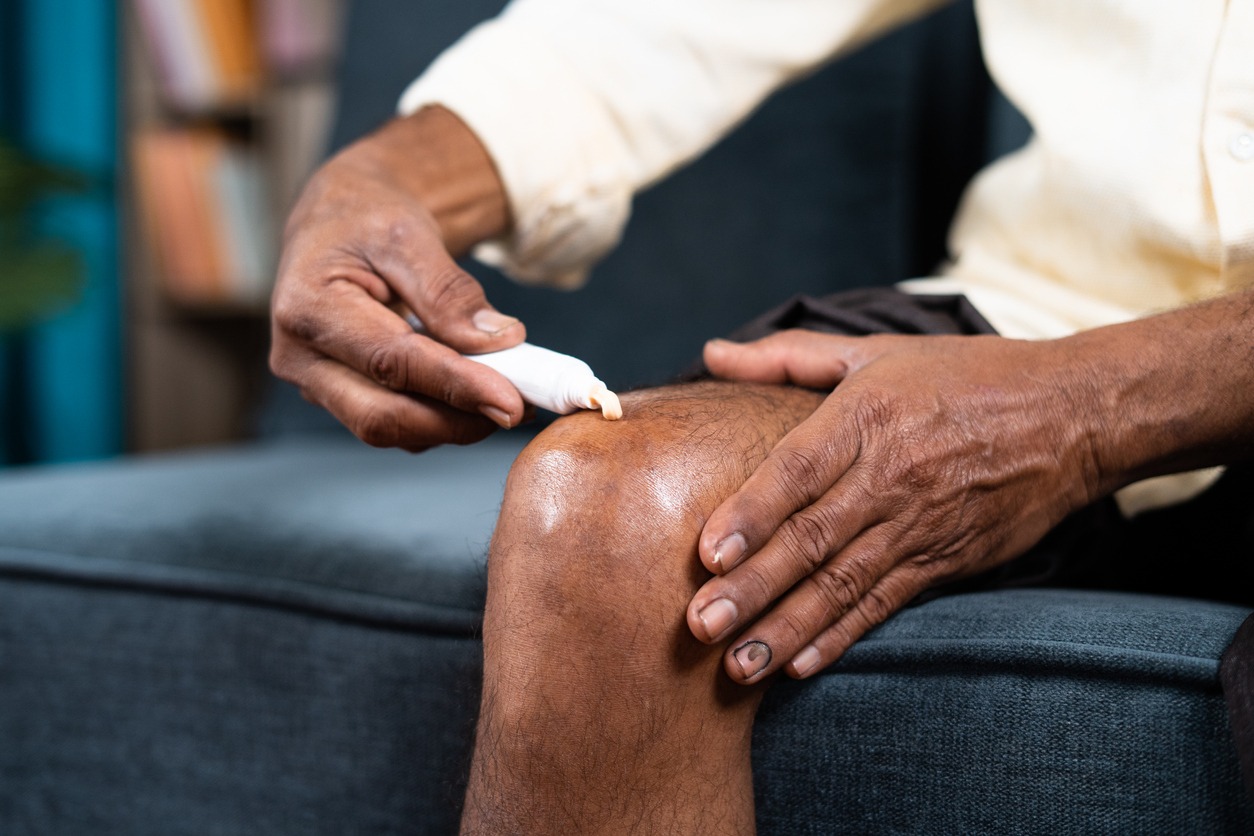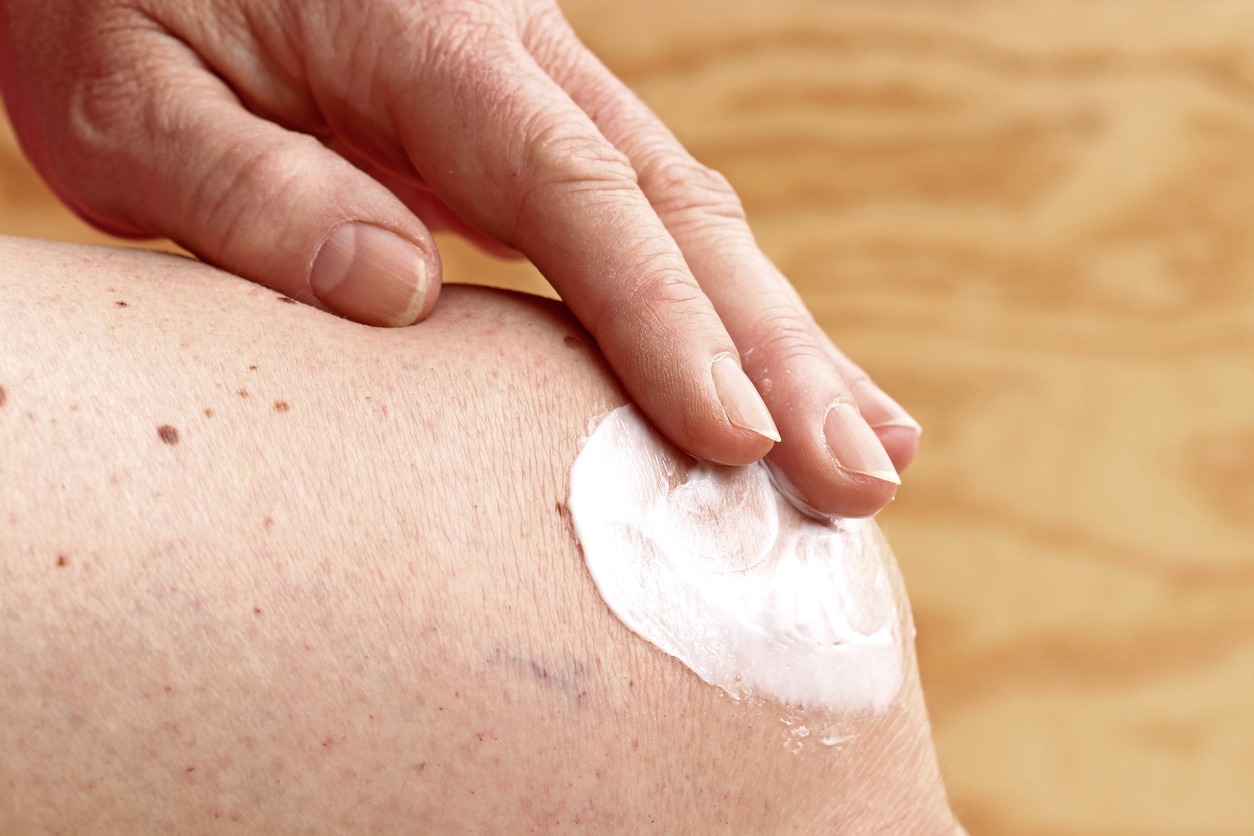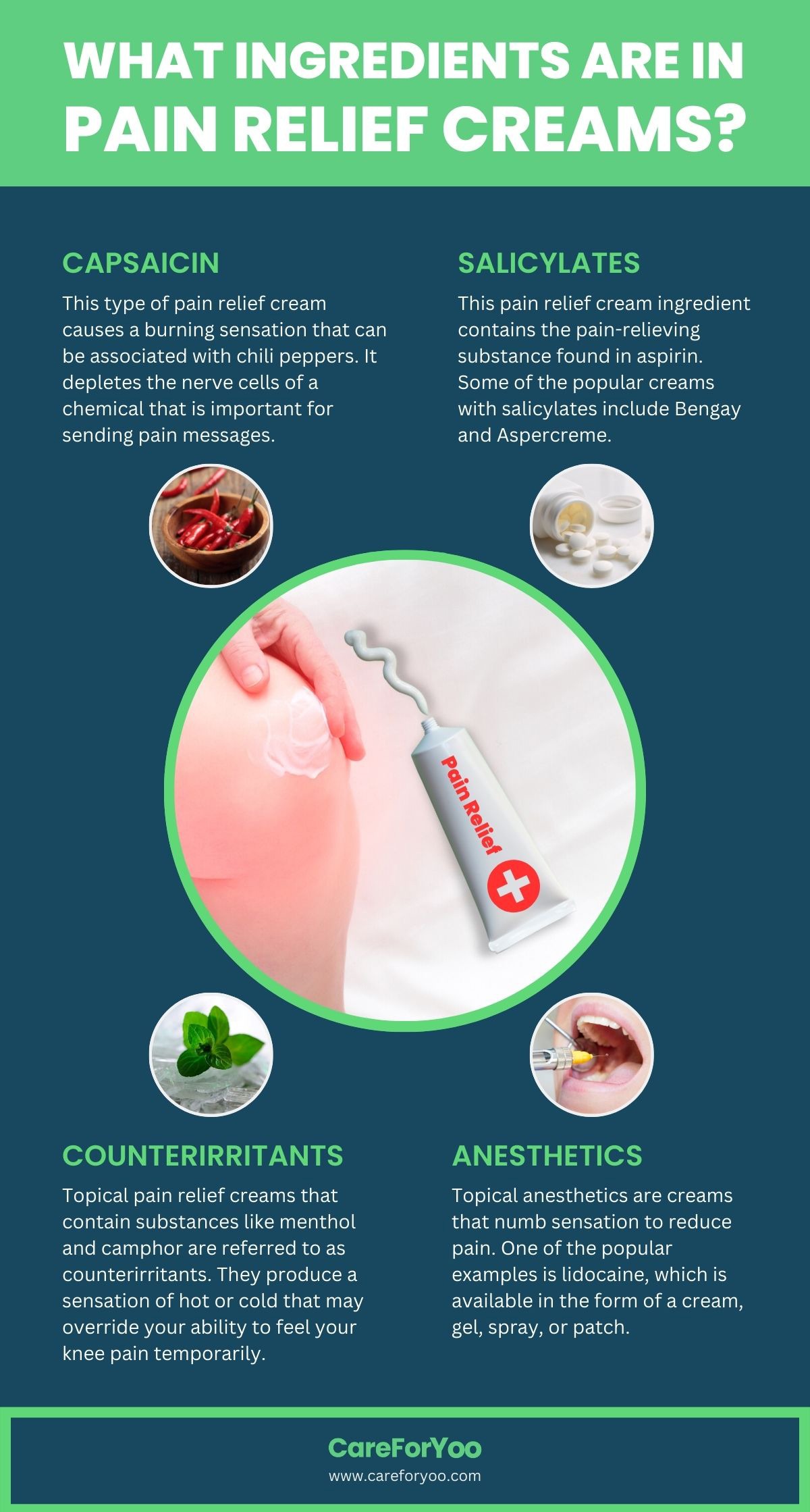Knee pain, whether due to arthritis, injury, swollen muscles, or just bad joints, is not a good thing to experience. It is indeed miserable to live with constant pain in the knees to the point where it is difficult to sit down without feeling any shooting pain. If you are experiencing knee pain, you probably want as many pain relief options as possible.
There are actually various treatments for knee pain, such as over-the-counter pain relievers in the form of nonsteroidal anti-inflammatory drugs (NSAIDs) like ibuprofen. However, many claims that oral pain relievers may have side effects and are not suitable for all, especially those who have other existing health conditions. That is why another option to try in order to alleviate knee pain is the use of over-the-counter topical creams or pain relief creams.
The question is, can pain relief creams help with knee pain? If you have the same question in mind, we are here to help you. In this post, we will give you more information about how pain relief creams can help with knee pain.
What are Topical Pain Medications?
Topical pain medications are medications that are absorbed through the skin. The most common varieties are creams that can be rubbed onto the skin over the painful joints on the knees and other parts of the body. Some also come in a spray or a patch that sticks to the skin. Since the ingredients are absorbed through the skin, the majority of topical pain medications are best used on joints that are near the surface of the skin, such as the joints in the knees and hands.[1]
If you are interested in using topical creams, you may check out our list of the 5 Best Anti-Inflammatory Creams Over The Counter.
What Ingredients are in Pain Relief Creams?
Pain relief creams that are available over the counter commonly contain active ingredients in order to work. Below are the types of ingredients used in pain relief creams:
Capsaicin
This type of pain relief cream causes a burning sensation that can be associated with chili peppers. It depletes the nerve cells of a chemical that is important for sending pain messages. It is most effective if used several times a day. However, it may take up to two weeks to feel relief from knee pain.[1]
Salicylates
This pain relief cream ingredient contains the pain-relieving substance found in aspirin. Some of the popular creams with salicylates include Bengay and Aspercreme.[1]
Counterirritants
Topical pain relief creams that contain substances like menthol and camphor are referred to as counterirritants. They produce a sensation of hot or cold that may override your ability to feel your knee pain temporarily. Some examples include Biofreeze and Icy Hot creams.[1]
Anesthetics
Topical anesthetics are creams that numb sensation to reduce pain. One of the popular examples is lidocaine, which is available in the form of a cream, gel, spray, or patch.[1]
How Well Do Pain Relief Creams Work?
Pain relief creams claim to relieve joint pain when applied to the skin. They are able to provide short-term but effective relief. They tend to work best on joints that are close to the surface of the skin.[2] But opinions differ on the effectiveness of over-the-counter topical pain medications.
Many people say that pain relief creams help relieve their knee pain or arthritis pain. However, scientific research reveals only modest benefits. Some products work only a bit better than a placebo in relieving arthritis pain. There are also times when these creams work more effectively when used with other treatments, such as oral medications like NSAIDs.[1]
But when you can’t find any ideal pain relief solution for your knee pain, turning to topical pain relief treatments like pain relief creams can be ideal as they provide effective and quick solutions. They are also easily accessible and highly affordable.[3]
You can read our Guide to Selecting Pain Relief Creams for more tips and recommendations.
Advantages of Using Pain Relief Creams
If you are wondering about the benefits that you can get from using pain relief creams, below are some of them:
Precise Targeting
Unlike oral medications for pain relief that are processed through the digestive system and affect the whole body, pain relief creams only target the specific body part to relieve pain. Therefore, if you have knee pain, all you need to do is massage the cream to the affected area. This will not affect other parts of your body, particularly your internal organs.[3]
Safe for Internal Organs
By using pain relief creams, you will be able to prevent the negative effects caused by the long-term use of oral medicines on the other organs of your body. Since creams do not pass through the digestive system, it does not lead to any side effects.[3]
Faster Pain Relief
Since pain relief creams are absorbed by the skin instead of the circulatory system, they can provide faster relief compared to oral medications. When you massage them onto the affected area, they will directly target the pain and relieve it in just a few minutes. In addition to that, pain relief creams can also be used multiple times a day without any side effects.[3]
How to Safely Use Pain Relief Creams
Even though pain relief creams are over-the-counter products, you still need to use them correctly or as advised by a doctor. Below are some of the guidelines that you need to follow to make sure that you are using the cream safely and effectively:[2]
- Always follow the instructions on the package when applying pain relief creams.
- Make sure to wash your hands before and after applying the cream.
- Avoid touching your eyes or mucus membranes when you have pain relief cream on your hands.
- Try to limit the use of pain relief creams to four times daily unless the package or your doctor suggests otherwise.
- Stop using the cream immediately if irritation occurs.
- If you have an aspirin allergy, ask your doctor if you need to avoid salicylates.
Since there are lots of pain relief creams available on the market today, it can be challenging to know which is the right one that will help alleviate your knee pain. You can keep trying different products until you find the one most effective for you. However, if over-the-counter pain relief creams are not working, it is important to talk to your doctor in order to create a pain management plan, which may include exercises and stronger medications.
For more tips and recommendations, you may also read our Guide to Choosing the Right Anti-Inflammatory Creams.
Conclusion
Knee pain can truly cause difficulties for a lot of people, which can also affect day-to-day activities. Luckily, there are pain relief creams that you can safely apply on your knees to help alleviate the pain, even just temporarily. But always remember that it is still best to consult your doctor if you are experiencing knee pain constantly in order to get diagnosed and be given the right treatment. We hope this post helped you learn more about how pain relief creams can help with knee pain.
References
[1] Mayo Clinic, E. (2021, May 20). Rub these drugs on your joints to relieve arthritis pain. Mayo Clinic. Retrieved January 19, 2023, from https://www.mayoclinic.org/diseases-conditions/osteoarthritis/in-depth/pain-medications/art-20045899
[2] Carey, E. (2020, September 21). Best pain relief creams for arthritis. Healthline. Retrieved January 19, 2023, from https://www.healthline.com/health/arthritis/creams#how-they-work
[3] Omnigel, E. (2022, December 30). Benefits of topical relief pain gels over standard pain pills. Omnigel. Retrieved January 19, 2023, from https://www.omnigel.com/blogs/benefits-of-topical-relief-pain-gels-over-standard-pain-pills







